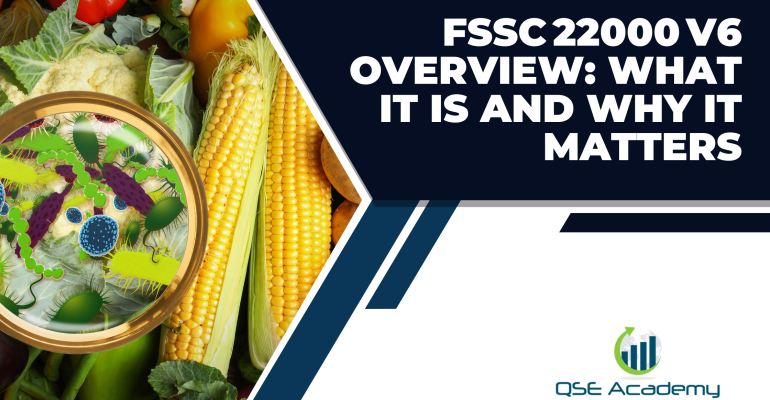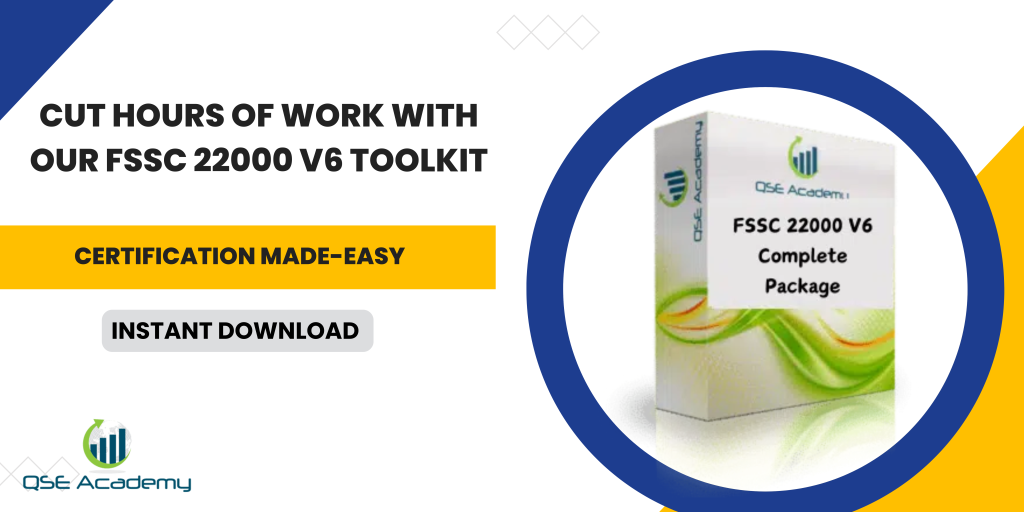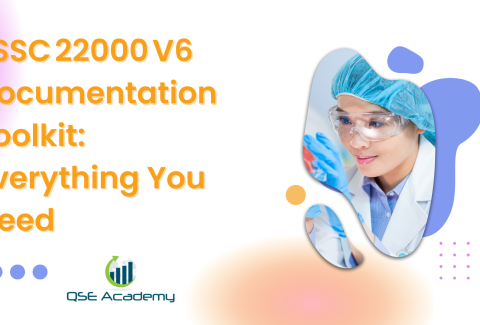FSSC 22000 V6 Overview: What It Is and Why It Matters
Understanding the Global Language of Food Safety
Many organizations hear about FSSC 22000 V6, but few fully understand what it represents or why it’s rapidly becoming a requirement across the global food supply chain.
In my work supporting food manufacturers, packaging producers, and logistics providers through certification, one thing has become clear: businesses that understand the purpose and value of the standard implement it more effectively and benefit from it sooner.
This guide gives you a clear overview of what FSSC 22000 V6 is, how it works, and why it matters — whether you’re just starting your food safety journey or planning your next strategic upgrade.
What FSSC 22000 V6 Actually Is
FSSC 22000 V6 is a GFSI-recognized food safety certification scheme designed to ensure consistent and reliable food-safety management across the entire food chain.
It operates through three components:
| Component | Purpose |
|---|---|
| ISO 22000 | The management system backbone (risk-based thinking, PDCA, documentation, leadership) |
| PRPs (ISO/TS 22002 Series) | Sector-specific hygiene and infrastructure requirements |
| FSSC Additional Requirements | Food fraud, food defense, food-safety culture, labeling controls, environmental monitoring |
Together, these elements make FSSC 22000 V6 a globally respected framework trusted by regulators, retailers, and brand owners.
Pro Tip: Think of FSSC 22000 V6 as a single integrated system combining management structure, hygiene practices, and risk-based controls.
 Why FSSC 22000 V6 Matters Now
Why FSSC 22000 V6 Matters Now
Food safety expectations are higher than ever.
Regulators are tightening requirements, global brands need reliable suppliers, and consumers are paying closer attention to safety, transparency, and traceability.
FSSC 22000 V6 aligns with all three pressure points by:
- Demonstrating global compliance
- Supporting export and retail access
- Building confidence in the consistency and safety of your operations
- Strengthening recall preparedness and traceability
A recent example stands out: a regional frozen-food manufacturer completed certification and gained entry into two new export markets within months simply because buyers required GFSI-recognized certification. That single decision accelerated growth faster than any marketing campaign could have.
Key Components and Requirements of FSSC 22000 V6
To understand how the system works in practice, here’s how requirements are structured:
- ISO 22000 framework ensures leadership commitment, hazard analysis, communication, and continual improvement.
- PRPs provide the physical and operational hygiene foundations specific to each food-chain sector.
- Additional FSSC clauses increase resilience and credibility by requiring:
- Food defense programs
- Food-fraud vulnerability assessments
- Environmental monitoring
- Clear labeling controls
- Demonstrated food-safety culture
Pro Tip: Start by mapping new FSSC requirements to existing processes — most organizations discover they already have 60–80% in place if ISO 22000 is implemented.
Who Needs FSSC 22000 V6 Certification
FSSC 22000 V6 is applicable to a wide range of food-chain organizations, including:
- Food and beverage processing facilities
- Packaging and food-contact material manufacturers
- Logistics, warehousing, and transportation providers
- Catering and institutional food service
- Animal feed and pet food operations
- Ingredient and additive suppliers
Certification becomes valuable — or even necessary — when:
- Supplying major retailers or export markets
- Pursuing large-scale distribution
- Reducing repeated supplier audits
- Strengthening brand or buyer credibility
Common Mistake: Assuming certification is only relevant to large facilities. Small and medium organizations benefit equally — and often more — because certification levels the playing field.
Benefits of FSSC 22000 V6 for Food-Chain Businesses
Organizations certified to FSSC 22000 V6 experience measurable gains, including:
- Market recognition and access due to GFSI alignment
- Fewer duplicate audits from customers and regulators
- Enhanced food-safety culture and operational discipline
- Improved traceability and recall readiness
- Increased customer and investor confidence
Pro Tip: Treat certification as an operational improvement tool — not only a compliance requirement.
How FSSC 22000 V6 Compares to ISO 22000
Many organizations begin with ISO 22000, then transition to FSSC.
Here’s how they differ:
| Category | ISO 22000 | FSSC 22000 V6 |
|---|---|---|
| GFSI-recognized | No | Yes |
| Requirements | Management-system only | Adds PRPs + additional controls |
| Audit Style | Announced | Includes unannounced audits |
| Market Demand | Moderate | High with global buyers |
Pro Tip: If buyers request “GFSI certification,” they’re referring to FSSC 22000 or another benchmarked scheme — not ISO 22000 alone.
Steps to Get Certified
Certification follows a structured path:
- Gap assessment
- Implementation of missing requirements
- Staff training and awareness
- Internal audit and management review
- Stage 1 audit
- Stage 2 certification audit
- Surveillance audits over a three-year cycle
Pro Tip: A readiness checklist helps maintain momentum and ensures nothing is missed prior to audits — especially unannounced visits.
Transition and Continuous Improvement
Whether transitioning from ISO 22000 or updating from older FSSC versions, ongoing improvement is central to FSSC 22000 V6.
Training, documentation control, verification activities, and process performance reviews ensure the system remains active — not something revisited only before audits.
FAQs — Quick Answers to Common Questions
Q1: Is FSSC 22000 V6 mandatory?
Not legally — but increasingly required by global brands and supply-chain buyers.
Q2: How long does certification take?
Typically 3–6 months depending on current system maturity.
Q3: Does FSSC 22000 V6 support sustainability?
Indirectly — environmental monitoring, responsible sourcing, and traceability practices align closely with ESG expectations.
Conclusion — Building Trust Through Compliance
FSSC 22000 V6 provides more than certification. It builds confidence, drives consistency, improves transparency, and supports long-term business growth.
It’s a globally recognized framework designed to strengthen food safety across every link of the supply chain — from raw materials to consumer-ready products.
Next Step:
Download the FSSC 22000 V6 Starter and Readiness Guide or schedule a short consultation to determine your organization’s best pathway toward certification.
Melissa Lavaro is a seasoned ISO consultant and an enthusiastic advocate for quality management standards. With a rich experience in conducting audits and providing consultancy services, Melissa specializes in helping organizations implement and adapt to ISO standards. Her passion for quality management is evident in her hands-on approach and deep understanding of the regulatory frameworks. Melissa’s expertise and energetic commitment make her a sought-after consultant, dedicated to elevating organizational compliance and performance through practical, insightful guidance.








